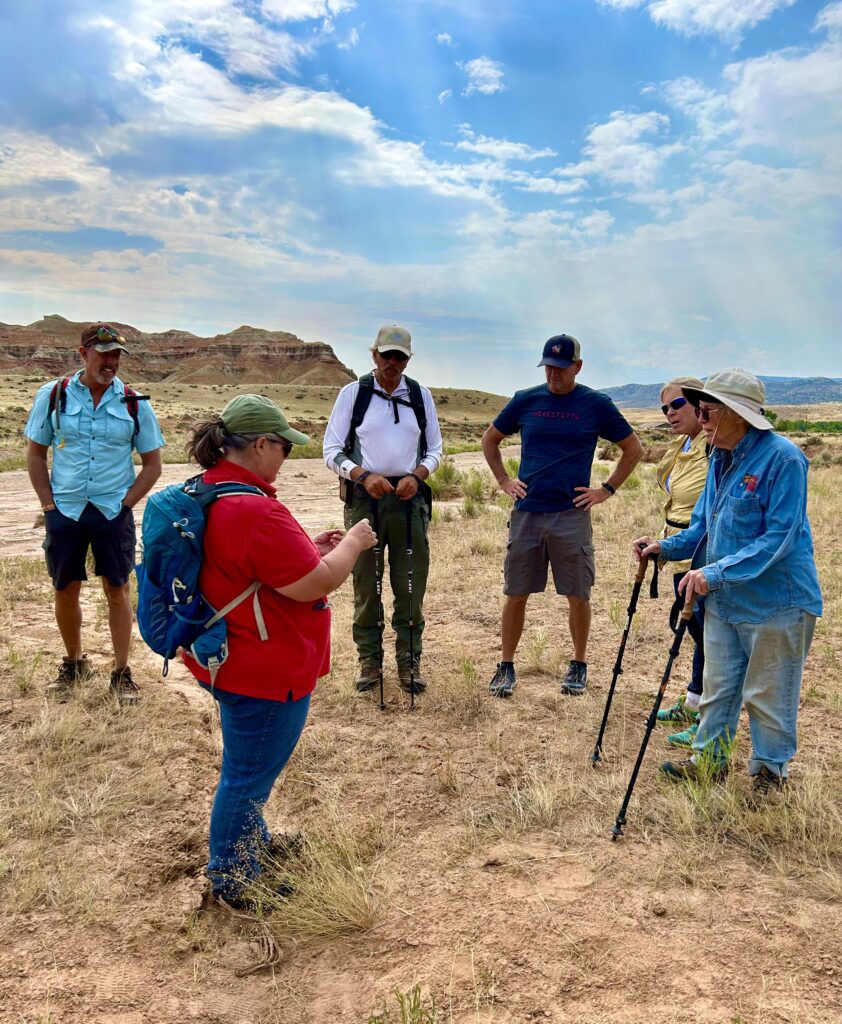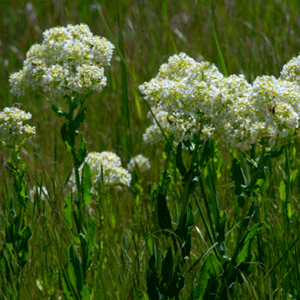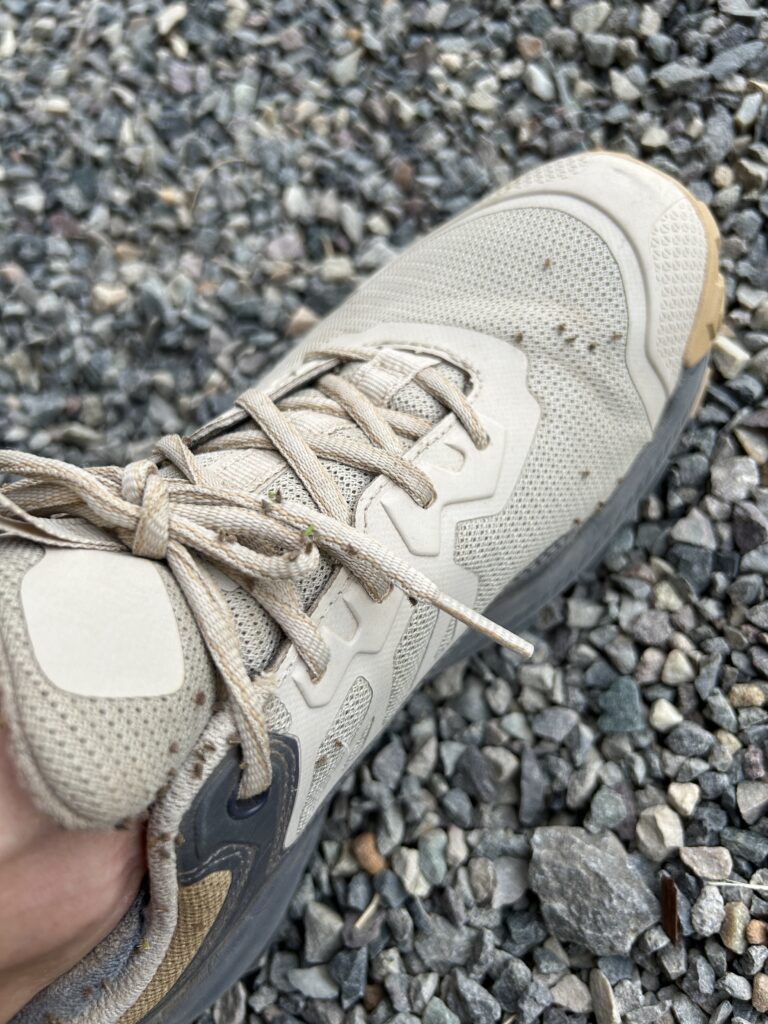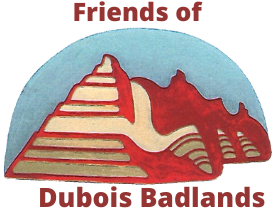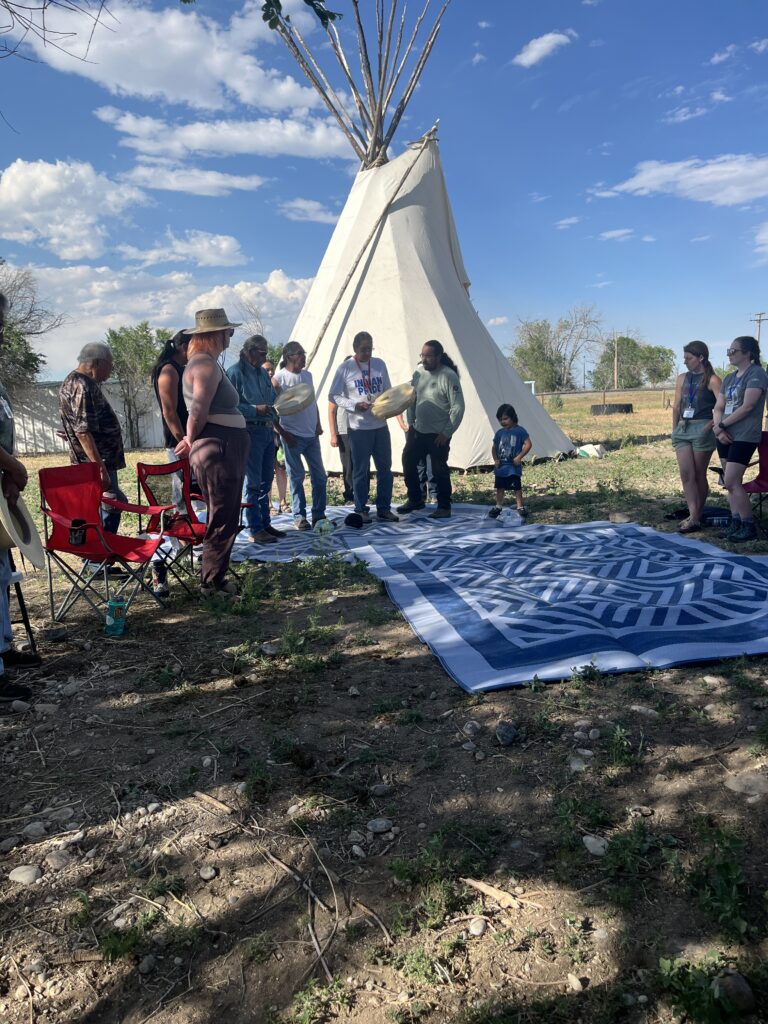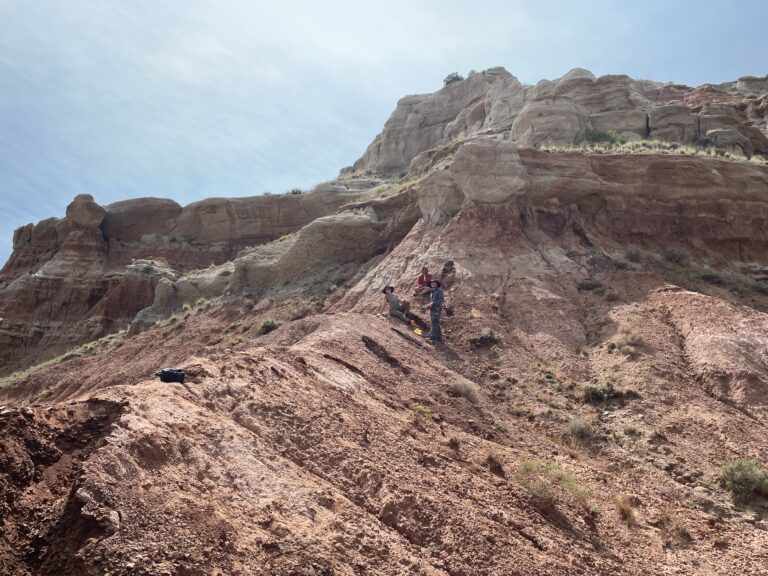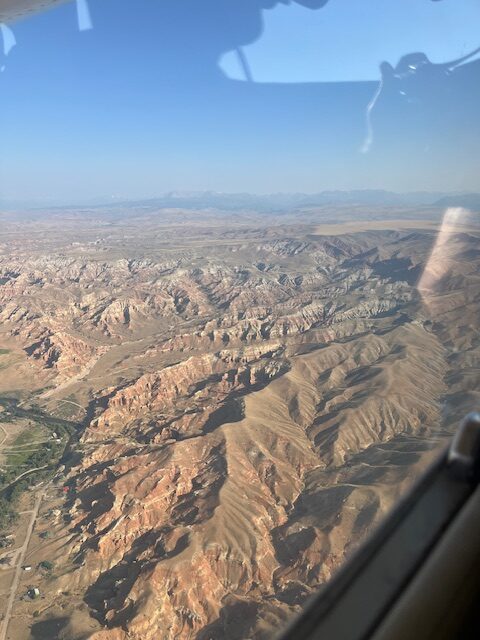Invasive Species Hike
The Friends of Dubois Badlands hosted an Invasive Species Hike on July 26, 2024. More than a dozen people turned out for the Badlands hike to identify and learn how to control the spread of plants designated “invasive.” Although most of the Badlands is relatively clear, cheatgrass, whitetop, spotted and Russian knapweed, and other common offenders are notable for spreading aggressively, choking out native species, and damaging the habitat for sheep, deer and other wildlife. The July 26 session was organized by FoDB Board member Lillian McMath and led by Bob Finley of Fremont County Weed & Pest and Amy Anderson, Habitat Biologist with Wyoming Game & Fish. They explained that most invasive species were introduced inadvertently. Common infestation sites are around gates, campgrounds, and trailheads, and in soil disturbed by logging or road and building construction. Fortunately, there are small steps each of us can take to prevent further spread. Trail etiquette includes taking care to remove seeds that may have clung to shoes or pant hems, as well as checking tires and skid plates, and thoroughly brushing horses and dogs after outdoor activities. Anderson offered special praise for “weed warrior” Lynn Stewart, who clips or knocks off seed heads on hikes and uses the iNaturalist app to identify plants and report invasive species to a national database. Location info is then shared with local agencies and, if the weed is bad enough, Finley said, it will be treated. Anderson added that herbicides delivered by drone is an exciting new tool in the fight. The drone “is about the size of a pickup bed and holds five gallons. We enter in the coordinates, and it flies about 10 feet above the ground over that precise area. Amazing.” For more info or help controlling invasive plants on private property, contact Fremont County Weed & Pest at 307-332-1052 or visit fcwp.org.
